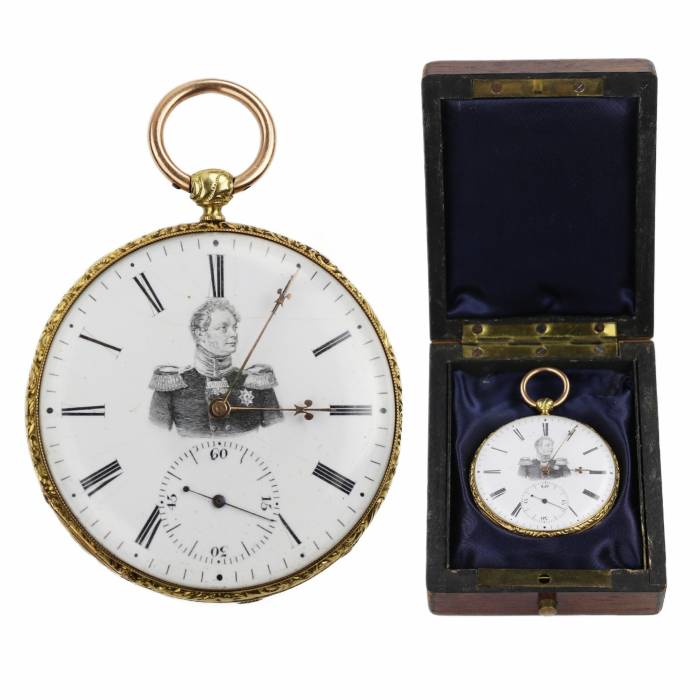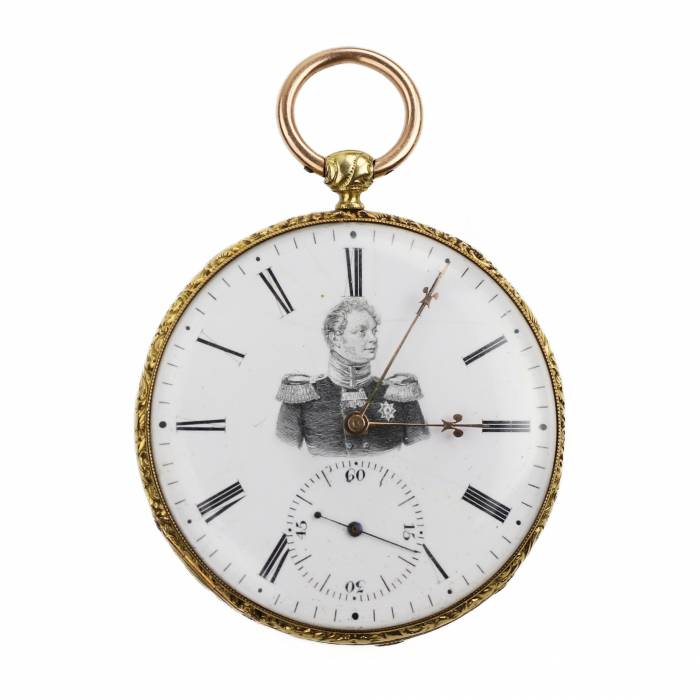
AntiqonART consultant will contact you within one business day after receiving your request.



























Discover how the value of similar works has evolved over the past 10 years. Art is not only beauty — it's an investment.
Discover how the value of similar works has evolved over the past 10 years. Art is not only beauty — it's an investment.
Antiqon ART offers free packaging, insurance, and delivery for most items purchased through the company.
Mouvement signé :B. Courvoisier à Tunsberg et huit trous en rubis, Chaux-de-Fonds, n°14878.
La montre est accompagnée de sa chaîne corsage d’origine en or russe 56 zolotniks (18K), avec poinçons de l’Empire russe, confirmés par photographie macro. Également inclus : l’écrin d’origine laqué à intérieur en velours bleu foncé et une clé à poignée façonnée à la main.
Poinçons :
– Boîtier : or 585 (14K), poinçons suisses
– Chaîne : poinçons partiellement lisibles — maître « NS », armoiries de Saint-Pétersbourg, or russe 56 (18K), poinçons sur fermoir et maillonsDimensions et poids :– Montre : diamètre 46 mm, poids 53,51 g– Chaîne : longueur 154 cm, poids 38,45 g
État :Excellent. Tous les éléments — boîtier, mouvement, miniature, chaîne, écrin — sont en état authentique de conservation muséale.
Provenance :Vente aux enchères Christie’s, Rome, succursale Palazzo Massimo Lancellotti.
The condition report is provided for informational purposes only.
It is not comprehensive and may not reflect all defects, restorations, alterations, or adaptations, as Antiqon does not perform professional conservation-level assessments. The information is based on a qualified, yet subjective, evaluation by our specialists.Before purchasing, we recommend consultation with an independent expert.Please also consult our Terms and conditions and Glossary A-Z, which contain important information on lot characteristics and sale conditions.

Thank you for your request!
Our consultant will contact you soon.

AntiqonART consultant will contact you within one business day after receiving your request.
Thank you for your request!
Our consultant will contact you soon.

AntiqonART consultant will contact you within one business day after receiving your request.














